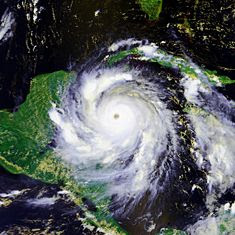Happy Thanksgiving!

Early one morning in November I set up my tripod and camera in an area that I knew was frequented by turkeys. Sure enough a proud tom and his hens came in to feed, also a white-tailed deer herd with a young four-point buck. As the sun stretched above the horizon its rays highlight beautiful tones of copper and green on the turkeys' feathers. I imagine deer hunters clad in blaze orange back in Minnesota are enjoying a similar scene, as they drink coffee from a thermos and watch their breathe drift away like a cloud of smoke. I feel right at home yet things seem out of place. I'm still in Belize, where the grass is green, it's 80-something degrees, I'm trying to remain still as mosquitoes swarm around me, and the turkey I speak of is not the familiar Wild Turkey of North America, but the Ocellated Turkey.
Last weekend I went to San Pedro and took a course in Open Water Diving; breathing under water felt very strange the first time. We explored the barrier reef and an underwater canyon, which were full of marine biodiversity. I was really excited to see a green sea turtle. I heard about a fishing tournament and stopped by for the weigh-in at the end of the day. It's raining and a large crowd surrounds the scale so I can't get a decent picture of the large marlin; two boys pose for me with barracudas. At night a karaoke DJ belts out Johnny Cash tunes and the bar (mostly Belizeans) sings along.
In the Belize City I walk by a store downtown, the usual crowd of homeless people wait with their hands out, now they're competing with a bell ringer from Salvation Army for a few shillings. More cruise ships are coming in and the streets by my office are full of tourists. I pass by the tourist village to pick up lunch and hear a local band singing in their best country accent, "Hey good lookin', Whatcha got cookin?" followed by Bob Marley.
After work I stop at a grocery store and find the shelves are well stocked with Thanksgiving essentials, such as pumpkin pie mix and cranberry sauce. While it is not a holiday in Belize, the hype from American television is enough to put Belizeans into the turkey-eating spirit. But I'm sure they still prefer their version of football (soccer) over American football.
So today I'll raise a glass of pineapple wine and say that I am thankful for everything I have in Belize, even though it's a little out of the ordinary. Happy Thanksgiving!





 Now I feel as if things are returning back to normal.
Now I feel as if things are returning back to normal.








